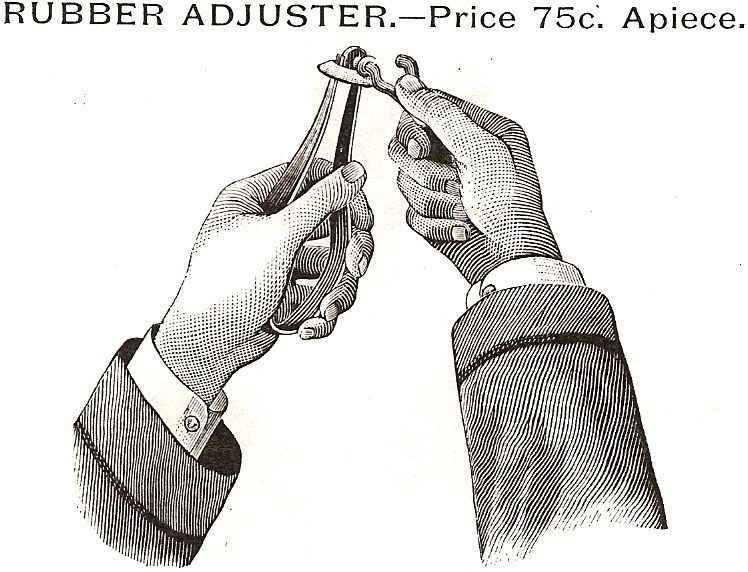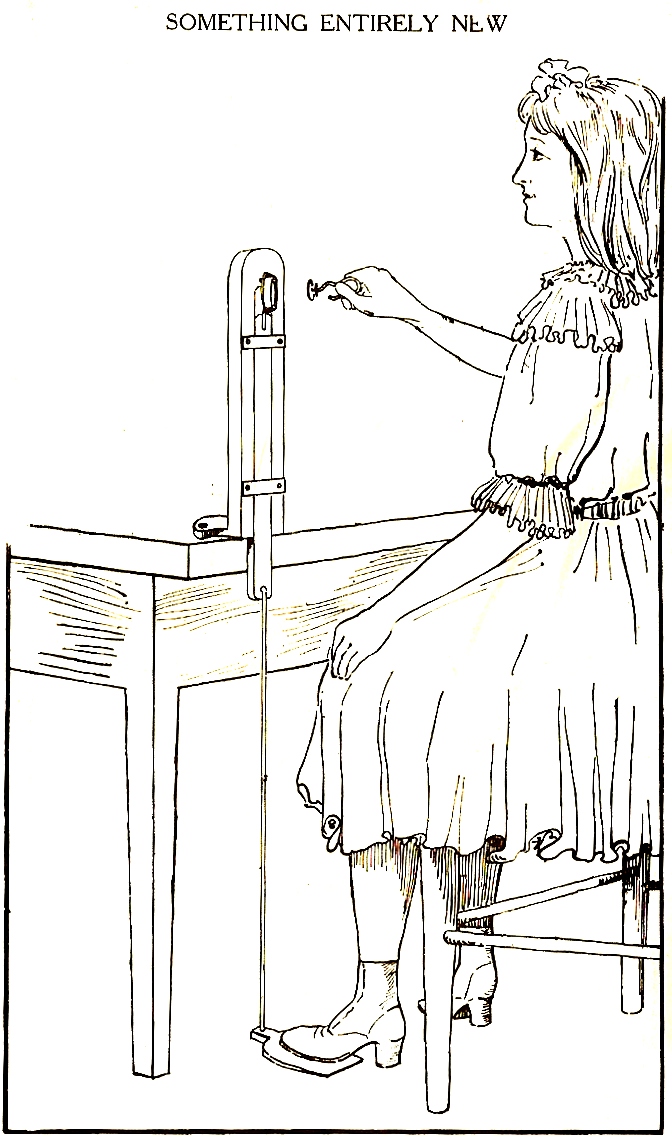Hutchinson Stopper Repair
The 1889 W. H. Hutchinson &
Son catalog included this list of product “advantages” that provide
clues to typical Hutchinson Patent Spring Stopper maintenance
activities:

First.
The Hutchinson Stopper is connected with a spring handle by a single
wire, which makes the liability for collecting dirt very slight compared
with those Stoppers having a jointed or hinged bail, or having two wires
connected with the stopper or valve, which are very hard to clean when
they get dirty.
Second. The Spring in the Hutchinson
Stopper is unlimited in its movement, consequently adjusts itself to all
sizes of throats, and any little variation in the size of the throat of
the bottle makes no difference in its working well.
All other Stoppers imitating ours, that is, having a spring
action to hold them open and closed, have a limited movement of the
spring and are liable, through a slight wear of the wire or variation in
the size of the neck of the bottle, to become loose, and are therefore
useless as a perfect stopper.
Third. The Hutchinson Stopper is made very
strong; the spring being of heavy tinned brass wire, which is not liable
to break or get out of place from hard usage.
Unlike the other stoppers made, which, in order to save time and
money, are too light to stand hard usage, or the hinged or jointed
stopper, which is easily broken or becomes unjointed inside of the
bottle making them useless, and almost impossible to extract them from
the bottle.
Fourth. The Hutchinson Stopper can be
easily extracted from the bottles, and if the rubber washer gets out of
order a new one can be put on, and the Stopper will be good as ever.
The rubber washer is the only part of the Stopper which ever wears out,
and it can be easily replaced with new when desired, which is another
distinguishing feature of
Stopper gauges were used to sort stoppers by their
five different button widths.
The 1908 W. H. Hutchinson and Son
Bottler’s Book
advertising copy specified “This gauge shows exactly the various sized
stoppers we make and will be very useful in sorting old stoppers.”

The 1889
W. H. Hutchinson & Son
Bottlers Supplies catalog advertised a rubber teat that was:
…put up on a split handle, adapted to straddle the
stopper spring in the bottle, when the rubber comes in contact with the
throat of the bottle, and by turning it around removes all the dirt.
It is not necessary to use this all the time, but if necessary,
it can be done very quickly.

The 1889 W. H. Hutchinson and
Son Bottlers Supplies
catalog also offered rubber adjusters that were utilized to attach
replacement rubber washers onto stoppers:

The W. H. Hutchinson and Son
1908 Bottler’s Book
included the same illustration, but the price had been dropped to $ .50
and a footnote mentioned “A better way is to slip the rubber on the wire
of the stopper and then pull it over the small edge of the button with a
pair of pliers.” The same
catalog also offered:
The Superior Rubber Adjuster
Save time and labor, which means money, by re-rubbering old Soda Stoppers.

The following
USE BURNT
SUGAR.
By J. C. O’Bannon,
Bottlers who have complaints of the bad odor of
their Soda will find that many times it is the cause of the rubber
discs in the
TO MAKE RUBBER STOPPERS TASTELESS.
By J. E. Daigre & Son,
Cover the stoppers with water, add a few ounces of
lump sugar and let them soak for a few days, stirring once or twice
daily with a stick.
After this treatment wash them and they are ready for use.
TO SAVE RUBBER DISCS.
By E. Goltz & Son,
When rubber disc on spring stoppers get hard, soak
half an hour in two parts Ammonia and one part water.
SPRING STOPPERS.
By Commerce Bottling & Mfg.
Co., Commerce,
We find that when putting new rubbers on spring
stoppers if the bottom of the stopper is scraped with a knife it
will do away with a sediment in the goods, that very often you
cannot tell the cause of.
Shotting will not take this off, but you can scrape it off
without injury to the stopper.
USE OF SPRING STOPPERS.
By Louis G. Uehling, Hooper
Bottling Works, Hooper,
Save all our spring stoppers out of broken
bottles, and those you pull out of bottles when rubbers are worn out
and put on new rubber discs and you will find there is quite a
little account saved each year.
Any supply house will supply you with all the rubber discs
you need at 35 cents to 50 cents per gross.
Your stoppers thus repaired will be as good as new.
TO CLEAN
By C. N. Mead,
Take a 5 gallon keg, cut a hole in the head or
side, put in some fine sand and a little washing powder or Gold
Dust, take the old rubbers off, then put the stoppers in the keg and
give them a good rolling for a few minutes.
You will find the stoppers bright and good as new.
Then put new rubbers on.
By John W. Radley,
In replacing rubber disc on
BALL STOPPERS.
By H. A. Ralu,
I have used in my Soda Water factory, four classes
of bottles, viz.: the ordinary cork bottles,
 HutchBook.com
HutchBook.com